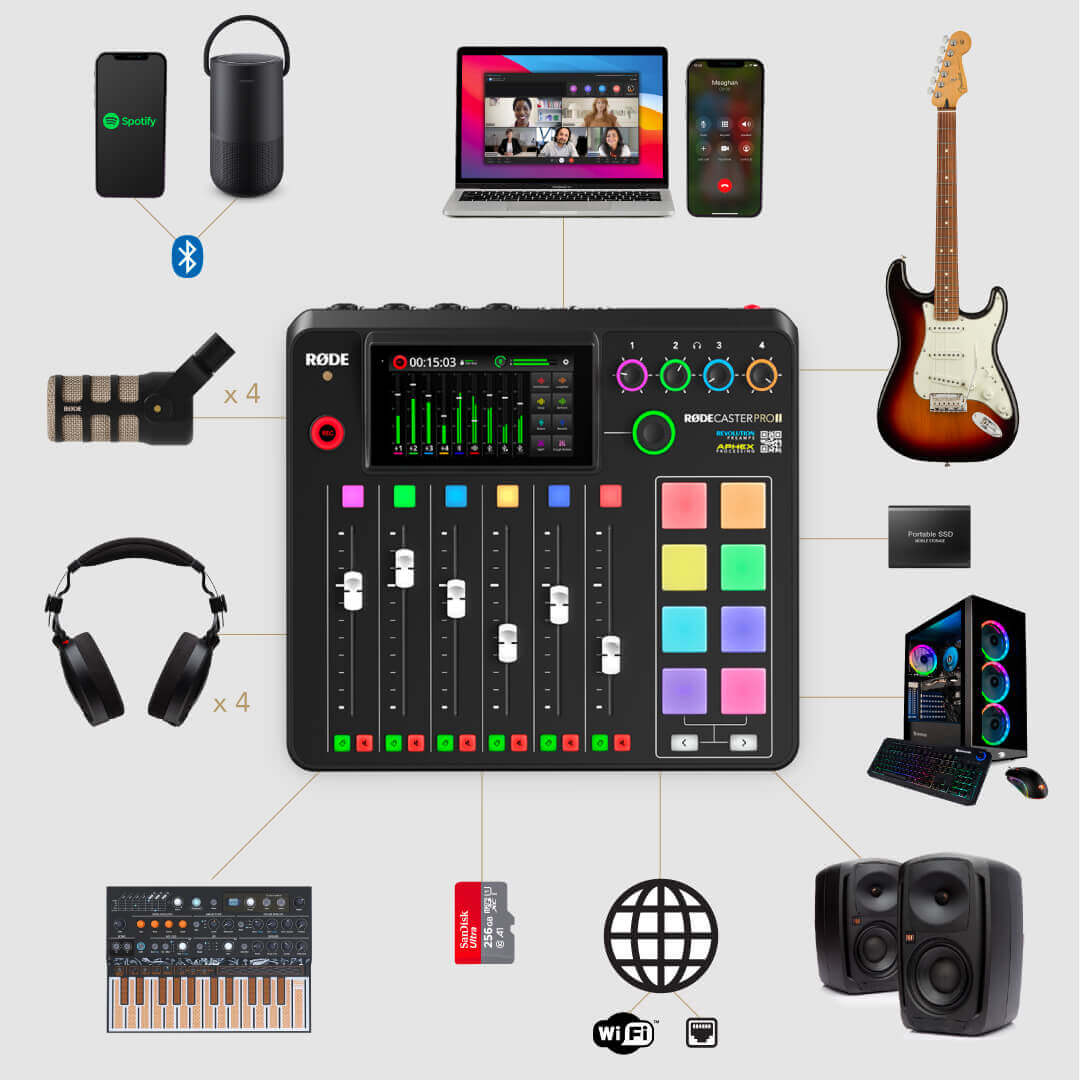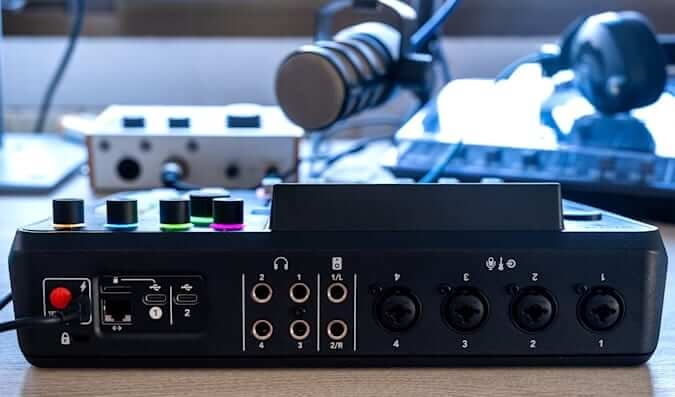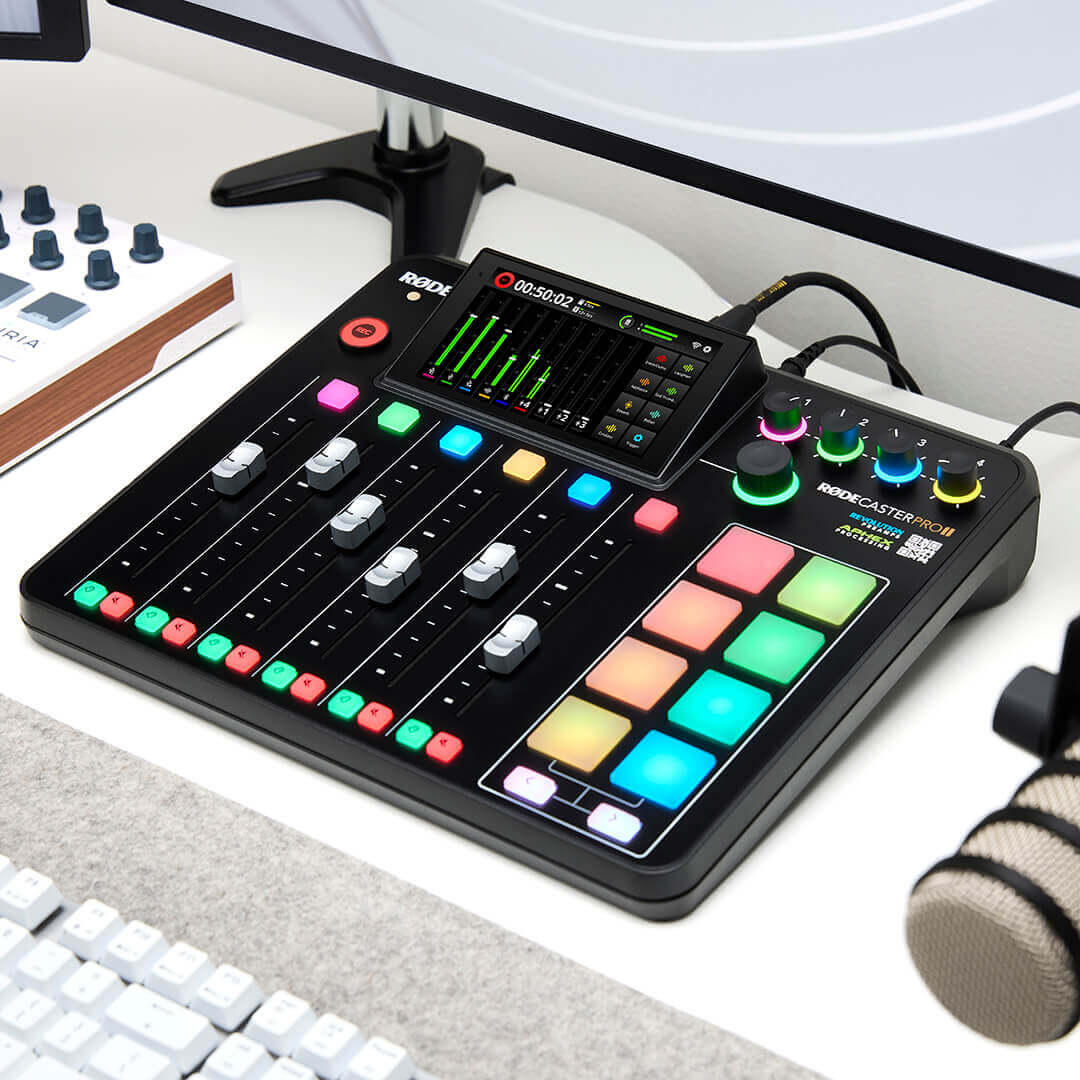Rodecaster Pro II: a home mixing desk for recording artists
Image Credit: Rode
While the original Rodecaster Pro was a mixing desk for podcasters, the Rodecaster Pro II is a desk for all creators – including recording artists.
The Rodecaster Pro streamlined the slog of recording multiple people at once, including over the internet via a computer or smartphone. Furthermore, content creators could add background music with ease, and onboard audio processing and enhancements allowed for professional audio creation. So the Rodecaster Pro was a one-stop-shop for hosting a podcast, really.
Now, the Rodecaster Pro 2 is expanding on the awesome feature set and presents a desk that promises to be more than capable for all creators. Rode claim you can use the Rodecaster Pro II for music production, so let’s take a look.
Make music with the Rodecaster Pro II

Fitted with a new “high-performance quad-core audio engine”, the Rodecaster Pro II has an audio resolution of 24-bit/44.1kHz.
Though the hardware looks very similar, Rode has made some changes in the name of improving functionality for recording artists. But first, let’s talk about the physical differences. The new hardware loses two fader strips and frees up more desk space. Despite the loss of these faders, just as many channels are available (9) – only you need to assign two via virtual controls. And on its rear, you’ll see Rode has included four XLR/¼” jack combo inputs rather than exclusively XLR. As a result, musicians can plug in their guitars or synths, play away and record.
For monitoring, there are four 1/4″ jacks on the RodeCaster Pro’s rear too. However, Rode states these outputs have a maximum output of only 250mW. Though not necessarily a bad thing, power-hungry headphones won’t be very satisfying to listen to. In addition, coiled cables may prove to be a nuisance as the ports are on the hardware’s rear. A pair of 1/4″ stereo speaker outputs sit next to the four headphone outputs too.

Rode has made a big point about its new preamps. With up to 76dB of input gain and a dynamic range of 113dB, your gain hungry condenser microphones should capture the intricate details of a sound source when recording to the Rodecaster Pro 2. Whereas before the Rodecaster Pro was pretty limited for musical recordings and could only really capture vocals, now there are onboard capabilities like stereo panning that enable you to capture a full space with two to four microphones. Additionally, Rode claims these preamps to be pretty quiet with an equivalent noise of -131.5dBV.
Customisation
The eight pads on the right of the interface can both trigger audio samples and send MIDI information. But you can also assign them to “mixer actions” such as fade out. A button below the 8 physical pads also allows you to switch between pad banks too. As for the mixer channels, you can reassign them however you like and map two inputs to one mixer channel. Once you are happy with your own customisation, you can save them as presets/profiles.
A small variety of audio effects are also available such as reverb and echo. Though some may find this pretty limiting so further editing in a DAW may be necessary. The hardware does have funny voice effects too, so some quirky vocal adlibs are an option…
WiFi and Bluetooth connectivity
A lot of the digital features such as WiFi and Bluetooth connectivity may not strike you as useful at first. However, artists that proactively promote themselves online by live-streaming or other means may be intrigued. For example, you can connect the Pro II to two PCs at once or your smartphone via WiFi which will make for some interesting audio routing options. And the ability to save these performances directly to SSDs and memory cards means you can repurpose that content for future use. Alternatively, an Ethernet port is also available and two USB-C ports sit next to it for smartphone and computer connectivity. You can also connect an additional MIDI controller as long as it is compatible with USB-C.
Then there’s the Bluetooth connectivity. Bluetooth on the Rodecaster Pro II supports both audio out and in. As a result, wireless monitoring is possible… but I’m not sure that’s an entirely practical means of monitoring a recording. Due to the compression that a file will experience before travelling between devices, the Bluetooth feature set may not be entirely useful for music production purposes.
Final thoughts
Upon first glance, the Rodecaster Pro II does seem primed for podcasters and streamers. Though this is true, the unit does appear to back up Rode’s promise that recording artists will find a valuable bit of kit.
The preamps provide ample gain, and the ability to customise mappings and controls allows for a workflow unique to each user. Whether you’re a solo artist looking to collaborate or in a band, the Rodecaster seems to provide the necessary tools to capture the depth and sonic clarity of a professional recording.
For $699, I think this looks like a cool all-in-one audio interface. Rode expects to be shipping “early to mid-June.”
